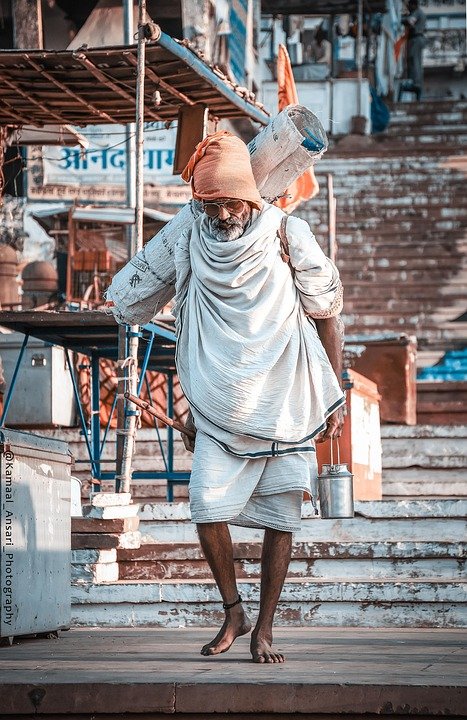Of course. Here is an article on healthcare in India, focusing on the dual themes of expanding access and improving quality.
Healthcare in India: Expanding Access and Improving Quality
India’s healthcare landscape is a study in contrasts. It is home to world-class private hospitals that attract medical tourists from across the globe, yet it simultaneously struggles to provide basic primary care to millions in its remote villages. This paradox defines the nation’s monumental healthcare journey: a dual mission to expand access to every citizen while relentlessly improving the quality of care delivered. In recent years, a wave of ambitious reforms and technological adoption has begun to reshape this landscape, signaling a determined push towards a more equitable and effective healthcare system for its 1.4 billion people.
The Challenge of Access: Bridging the Great Divide
For decades, the primary hurdle in Indian healthcare has been access. The urban-rural divide is stark; a majority of doctors and advanced medical facilities are concentrated in cities, leaving rural populations underserved. High out-of-pocket expenditure (OOPE) has been another crippling barrier, pushing millions of families into poverty each year due to medical costs.
To tackle this head-on, the Indian government launched its flagship initiative, Ayushman Bharat, in 2018. This program has two transformative pillars:
-
Pradhan Mantri Jan Arogya Yojana (PM-JAY): Often called the world’s largest government-funded health insurance scheme, PM-JAY aims to provide a health cover of ₹5 lakh (approx. $6,000) per family per year for secondary and tertiary care hospitalization. Targeting over 500 million beneficiaries from the most vulnerable sections of society, the scheme aims to create a crucial financial safety net, allowing families to seek treatment without the fear of catastrophic debt. By empaneling both public and private hospitals, it also gives patients a choice and expands the network of available care.
- Health and Wellness Centres (HWCs): The second pillar focuses on strengthening primary healthcare. The government is upgrading over 150,000 sub-centres and Primary Health Centres into HWCs. These centres are not just first-aid posts; they are designed to provide comprehensive care, including maternal and child health services, free essential drugs, and crucially, screening and management of non-communicable diseases (NCDs) like diabetes, hypertension, and cancer. By bringing diagnostics and preventive care closer to communities, HWCs are the foundation for a more proactive healthcare model.
Furthermore, technology has emerged as a powerful democratizing force. The eSanjeevani telemedicine platform, which gained immense traction during the COVID-19 pandemic, now connects millions of patients in remote areas with doctors in urban centres, bridging geographical gaps and saving patients time and travel costs.
The Quest for Quality: Raising the Standard of Care
While expanding access is critical, it must be complemented by a focus on quality. A hospital bed is of little use if the care provided is substandard. India faces significant challenges here, including a shortage of trained personnel, variable standards across public and private facilities, and a need for more robust regulatory frameworks.
Several initiatives are underway to address these quality-related issues:
-
The Ayushman Bharat Digital Mission (ABDM): This is arguably the most significant step towards a modern, quality-driven system. The ABDM aims to create a seamless online platform, creating a national digital health ecosystem. It provides every citizen with a unique Ayushman Bharat Health Account (ABHA) number, which allows for the creation and sharing of digital health records with consent. This ensures continuity of care, reduces diagnostic errors, and empowers patients with control over their health information.
-
Strengthening Medical Education: To address the chronic shortage of doctors and nurses, the government has aggressively pushed for the expansion of medical education. The number of medical colleges and available seats for both undergraduate (MBBS) and postgraduate studies has increased significantly. The establishment of the National Medical Commission (NMC) aims to reform medical education and regulation, ensuring higher standards for medical professionals.
- Standardization and Accreditation: There is a growing emphasis on quality benchmarks. Bodies like the National Accreditation Board for Hospitals & Healthcare Providers (NABH) are promoting a culture of quality and patient safety. While currently voluntary for many, a push towards accreditation is helping standardize protocols and improve outcomes in participating hospitals.
The Road Ahead: Challenges and Opportunities
Despite these promising strides, the path to universal healthcare is long and fraught with challenges. Public health expenditure, while increasing, remains low as a percentage of GDP compared to global standards. The effective implementation of schemes at the last mile remains a persistent hurdle, requiring constant monitoring and course correction.
The rising burden of non-communicable diseases and the need for greater investment in mental health infrastructure present new frontiers that demand attention. Moreover, effectively regulating the vast and heterogeneous private sector to ensure ethical practices and price transparency is a complex task that is central to the success of universal health coverage.
However, the vision is clearer than ever. By leveraging a combination of policy innovation, digital transformation, and a renewed focus on primary care, India is laying the groundwork for a more resilient and inclusive healthcare system. The journey from a fragmented, out-of-pocket-driven model to a system that prioritizes access and quality for all is a marathon, not a sprint. But with each Health and Wellness Centre inaugurated and every family saved from medical debt by PM-JAY, India moves one step closer to realizing its goal of "Health for All."

